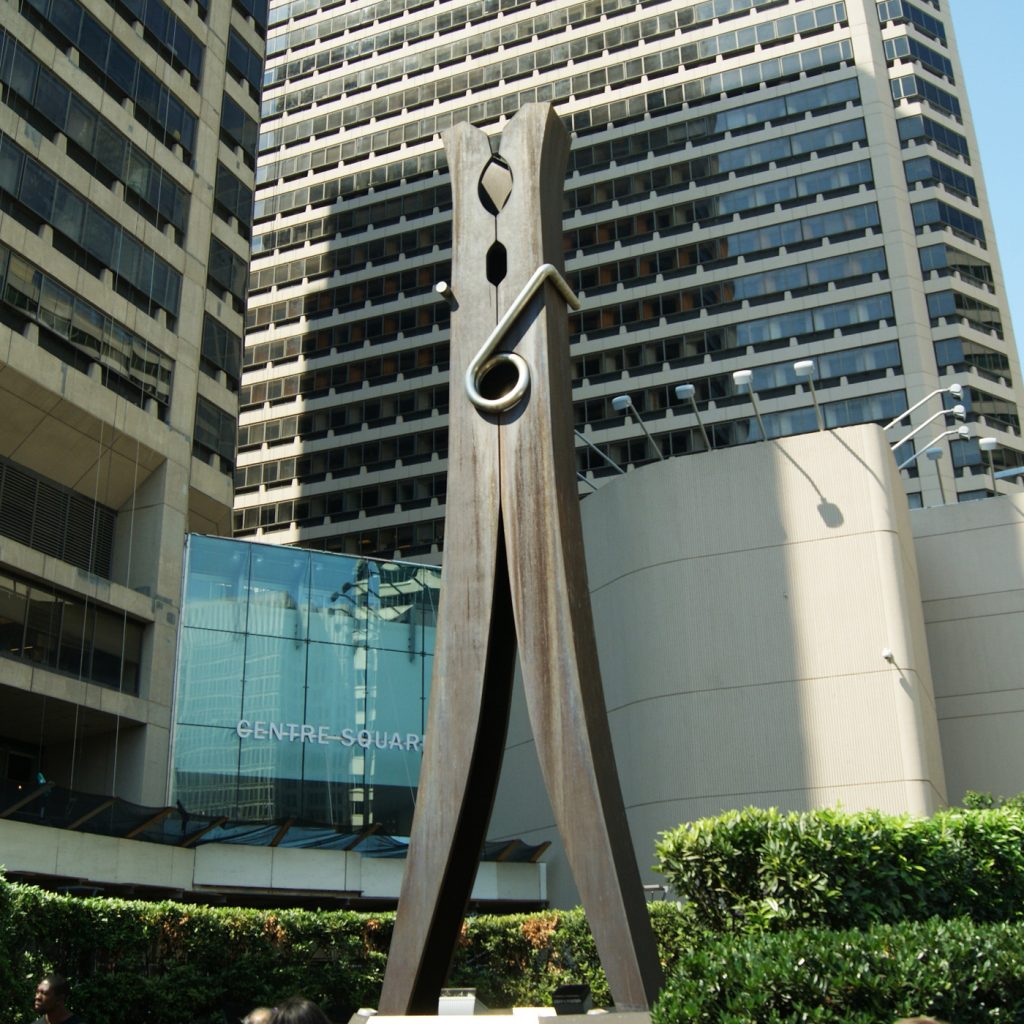This is admittedly a lighter story, fitting perhaps for an August weekend. Hungarians celebrate St. Stephen’s Day on Sunday, and the founding of the first Hungarian state. Many Hungarians have turned this into a long weekend and are relaxing on the shores of Lake Balaton. Here’s a story that binds two countries and two communities–literally. And it all focuses on the “lowly” clothespin…
I didn’t know that the clothespin was an American invention. It was patented in 1887 by Solon Moore and is still in production. Moore improved the previous versions with the so called “coiled fulcrum” which was made from a single wire. Now a clever single spring held the two wooden pieces together.
Millions of clothespin were manufactured and sold across the United States and later in Europe. The iconic design has inspired artists. Sculptor Claes Oldenburg created the world famous Philadelphia clothespin in 1976. It is a 45-foot steel sculpture resembling two lovers entwining.
A smaller version of a wood clothespin statue is located in the Hungarian city of Abádszalók. In 1896 two villages, Tiszaabád and Tiszaszalók merged under a new name of Abádszalók. The clothespin symbolizes this merger and the unity of the two parts of city.
György Lázár





